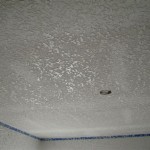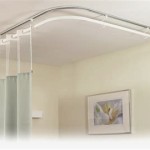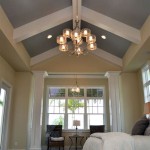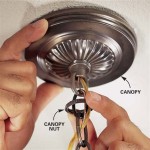What Kind of Paint Should I Use On a Bathroom Ceiling?
Selecting the correct paint for a bathroom ceiling is crucial to ensuring its longevity and preventing damage from humidity and moisture. Bathrooms are inherently damp environments, and the ceiling is particularly susceptible to moisture accumulation due to rising steam from showers and baths. Using the wrong type of paint can lead to peeling, blistering, and the growth of mold and mildew, ultimately requiring potentially extensive and costly repairs. Therefore, a careful consideration of the paint's properties and suitability for humid conditions is essential.
The primary concern when painting a bathroom ceiling is moisture resistance. Standard interior paints are often not formulated to withstand the levels of humidity found in bathrooms. These paints can absorb moisture, leading to the aforementioned issues. A suitable bathroom ceiling paint must be able to repel moisture, inhibit mold growth, and maintain adhesion even in high-humidity environments. Furthermore, the paint should be durable and easily washable to remove any condensation or splashes that may occur.
Understanding the Key Considerations for Bathroom Ceiling Paint
Several factors should be considered when choosing paint for a bathroom ceiling. These include the type of paint, its finish, the presence of additives, and the existing condition of the ceiling. Each of these aspects plays a significant role in the paint's performance and overall lifespan. A thorough understanding of these elements will facilitate a well-informed decision and a successful painting project.
The type of paint refers to its chemical composition, with latex and oil-based paints being the most common options. The finish refers to the paint's sheen, ranging from flat to high-gloss. Additives are substances incorporated into the paint to enhance its properties, such as mold resistance. The existing condition of the ceiling is crucial, as it may require preparation and priming before painting.
The Importance of Paint Type: Latex vs. Oil-Based Paints
Latex and oil-based paints possess distinct characteristics that make them suitable for different applications. Historically, oil-based paints were favored for their durability and moisture resistance. However, modern latex paints have significantly improved and often offer superior performance, especially in bathroom environments. The choice between the two depends on several factors, including the existing paint type, environmental concerns, and desired finish.
Latex paints, also known as water-based paints, are generally preferred for bathroom ceilings due to their flexibility, breathability, and ease of application. They allow moisture vapor to pass through, reducing the likelihood of blistering and peeling. Latex paints also tend to be more environmentally friendly, with lower VOC (volatile organic compound) emissions. This makes them a healthier choice for indoor environments. Furthermore, latex paints typically dry faster and are easier to clean up with soap and water.
Oil-based paints, also known as alkyd paints, are known for their hard, durable finish. They offer excellent moisture resistance and are often used in high-traffic areas. However, oil-based paints are less flexible than latex paints, which can lead to cracking and peeling over time, especially in environments with fluctuating humidity. They also emit higher levels of VOCs and require mineral spirits or paint thinner for cleanup. Due to these factors, oil-based paints are generally not recommended for bathroom ceilings unless there are specific circumstances that warrant their use, such as a pre-existing oil-based coating that is difficult to remove.
If the existing ceiling is painted with oil-based paint, it is crucial to properly prepare the surface before applying latex paint. This typically involves sanding the surface to create a good bond and applying a suitable primer designed for bonding latex paint to oil-based surfaces. Failure to properly prepare the surface can lead to poor adhesion and premature failure of the new paint coating.
Selecting the Right Finish: From Flat to High-Gloss
The paint finish refers to the level of sheen or gloss on the painted surface. Different finishes offer varying degrees of durability, washability, and light reflectivity. For bathroom ceilings, the most common and generally recommended finishes are satin and semi-gloss. However, flat, eggshell, and high-gloss finishes can also be considered depending on the specific needs and preferences.
Flat finishes have the lowest sheen and are excellent at concealing imperfections on the ceiling surface. However, they are the least durable and most difficult to clean. Flat paint is porous and can easily absorb moisture and stains, making it unsuitable for bathrooms with high humidity levels. While often used on walls, flat paint is generally avoided on bathroom ceilings due to its susceptibility to moisture damage.
Eggshell finishes have a slightly higher sheen than flat finishes and offer improved durability and washability. They are a good compromise between hiding imperfections and providing some moisture resistance. However, eggshell finishes are still not as resistant to moisture as satin or semi-gloss finishes, making them a less ideal choice for bathrooms that experience significant humidity.
Satin finishes have a moderate sheen and offer a good balance of durability, washability, and moisture resistance. They are easy to clean and can withstand moderate levels of humidity. Satin finishes are a popular choice for bathroom ceilings as they provide a smooth, slightly reflective surface that is both aesthetically pleasing and functional. They are also effective at hiding minor imperfections while providing adequate protection against moisture.
Semi-gloss finishes have a higher sheen than satin finishes and offer excellent durability and washability. They are highly resistant to moisture and stains, making them a suitable choice for bathrooms with high humidity levels. Semi-gloss finishes are easy to clean and can withstand frequent scrubbing. However, they are more likely to highlight imperfections on the ceiling surface and may create a more reflective appearance than desired in some bathrooms.
High-gloss finishes have the highest sheen and offer the best durability and washability. They are extremely resistant to moisture and stains, making them suitable for bathrooms that experience very high humidity levels. High-gloss finishes are easy to clean and can withstand frequent scrubbing. However, they are also the most likely to highlight imperfections on the ceiling surface and may create an overly reflective appearance. High-gloss finishes are typically used in commercial bathrooms or other areas that require maximum durability and moisture resistance, but are less common in residential bathrooms due to their high reflectivity.
In general, satin or semi-gloss finishes are the most appropriate choices for bathroom ceilings, providing a good balance of durability, washability, and moisture resistance while minimizing the visibility of imperfections. The specific choice between satin and semi-gloss depends on the level of humidity in the bathroom and the desired aesthetic appearance.
The Role of Additives: Mold and Mildew Resistance
Mold and mildew are common problems in bathrooms due to the high levels of humidity. These fungi can grow on painted surfaces and cause discoloration, unpleasant odors, and potential health problems. To prevent the growth of mold and mildew, it is essential to use paint that contains additives specifically designed to inhibit their growth. These additives are typically fungicides and biocides that are incorporated into the paint formulation.
Many paints marketed for bathroom use contain mold and mildew inhibitors. These paints are often labeled as "mold-resistant" or "mildew-resistant." However, it is important to note that these paints are not completely immune to mold and mildew growth. They simply slow down or prevent their growth for a certain period of time. The effectiveness of these additives can be affected by factors such as humidity levels, ventilation, and cleaning practices.
When selecting paint for a bathroom ceiling, it is advisable to choose a paint that specifically states it contains mold and mildew inhibitors. Check the product label or manufacturer's specifications to confirm the presence of these additives. In addition to using mold-resistant paint, it is also important to ensure adequate ventilation in the bathroom to reduce humidity levels and prevent the growth of mold and mildew.
Proper ventilation can be achieved by installing or using an exhaust fan during and after showers and baths. Opening a window can also help to circulate air and reduce humidity. Regularly cleaning the bathroom, including the ceiling, with a mold-killing cleaner can also help to prevent the growth of mold and mildew.
In cases where mold or mildew is already present on the ceiling, it is essential to remove it before painting. This can be done by cleaning the affected area with a solution of bleach and water. Ensure that the area is thoroughly dry before applying primer and paint. In severe cases of mold or mildew growth, it may be necessary to consult with a professional mold remediation service.
Priming the ceiling before painting is also crucial, especially if there are existing stains or discoloration. A good quality primer will help to seal the surface, block stains, and provide a smooth, even base for the paint. Choose a primer that is specifically designed for use in bathrooms or other humid environments.
In summary, selecting the right type of paint, finish, and additives is crucial for ensuring the longevity and appearance of a bathroom ceiling. Latex paints with a satin or semi-gloss finish, containing mold and mildew inhibitors, are generally the best choice for most bathroom environments. Proper preparation of the ceiling, including cleaning and priming, is also essential for a successful painting project.

Ceiling Paint For Bathroom Prestige Painting Gta

Ceiling Paint For Bathroom Prestige Painting Gta

How To Choose The Right Type Of Bathroom Ceiling Paint

Best Paint For Bathroom Ceiling Guide

Best Paint For Bathroom Ceiling Guide

Painting A Bathroom Ceiling And Adding Trim Young House Love

Best Paint For Bathroom Ceiling Guide

Choose The Right Type Of Paint For Your Bathroom

Best Paint For Steamy Bathroom Ceiling Eco Inc

What Is The Best Bathroom Ceiling Paint Angi
Related Posts








